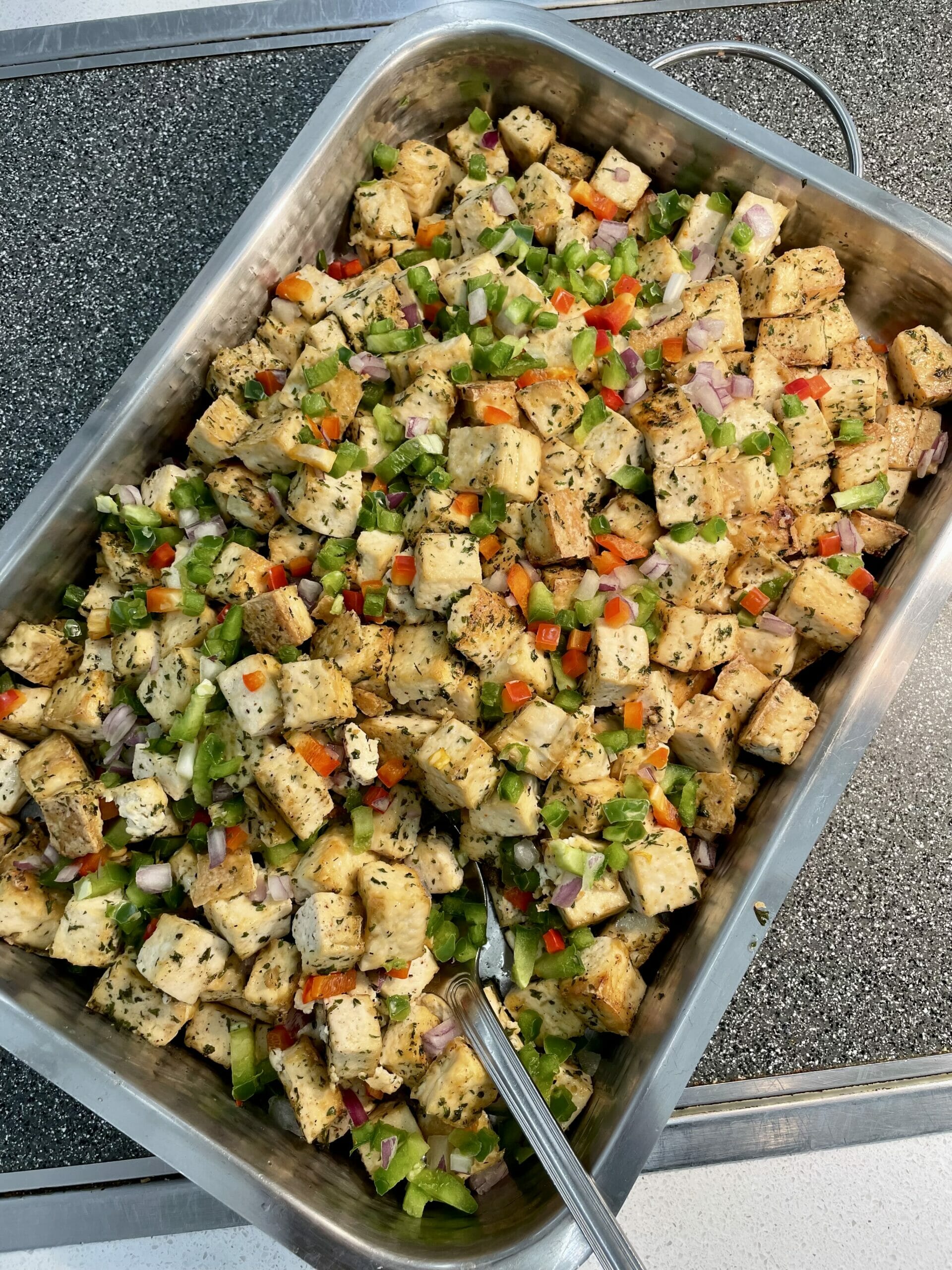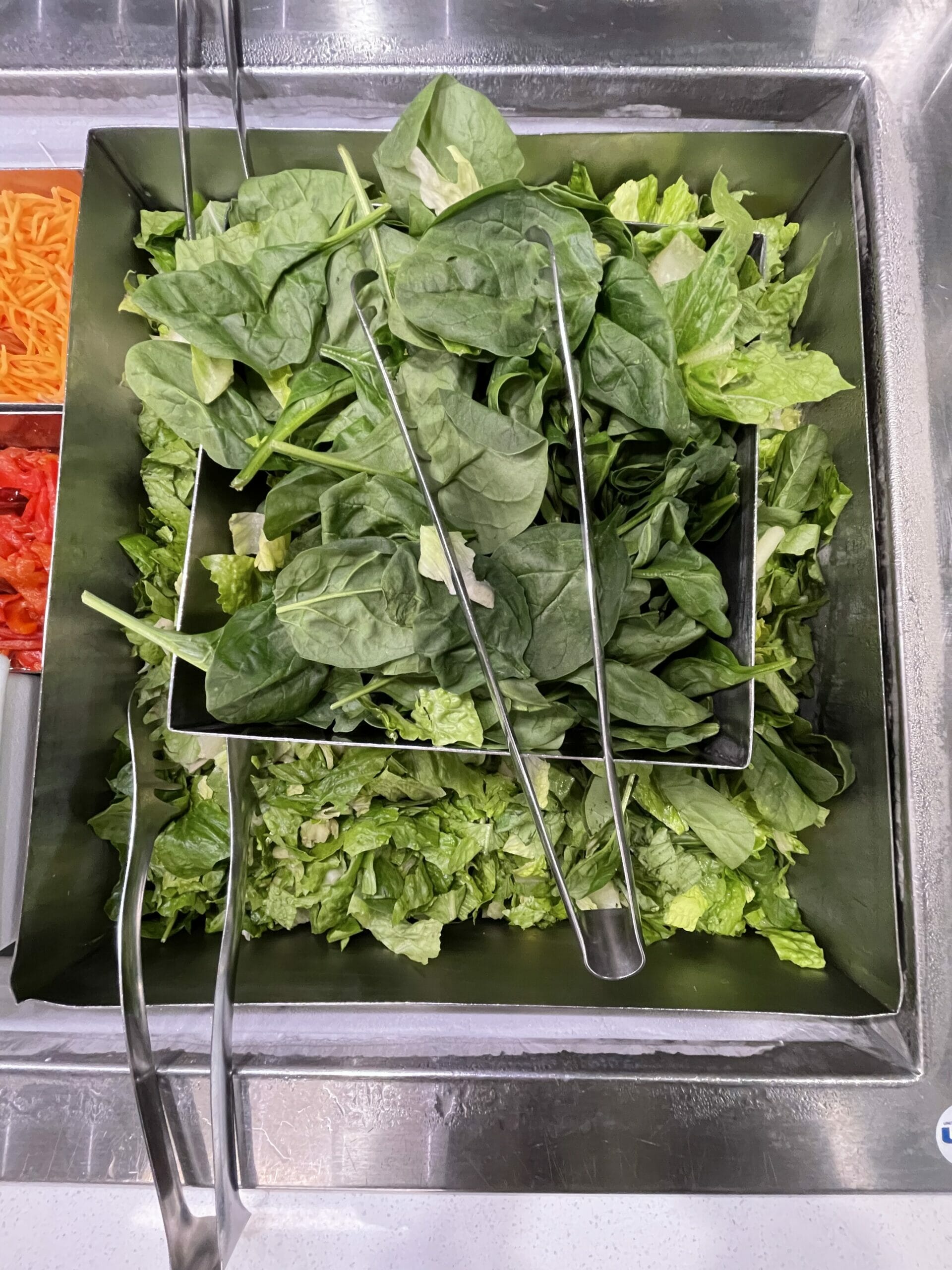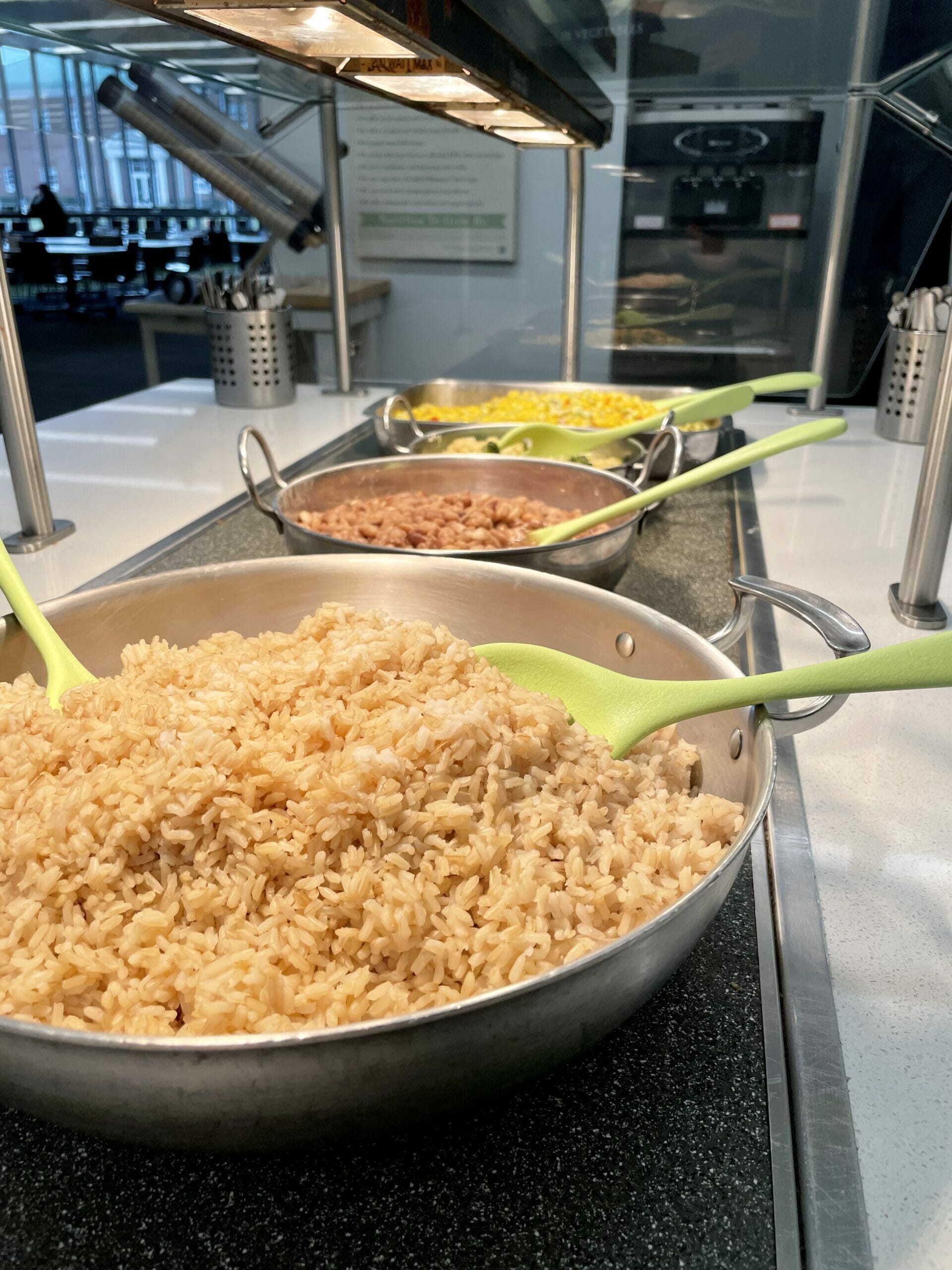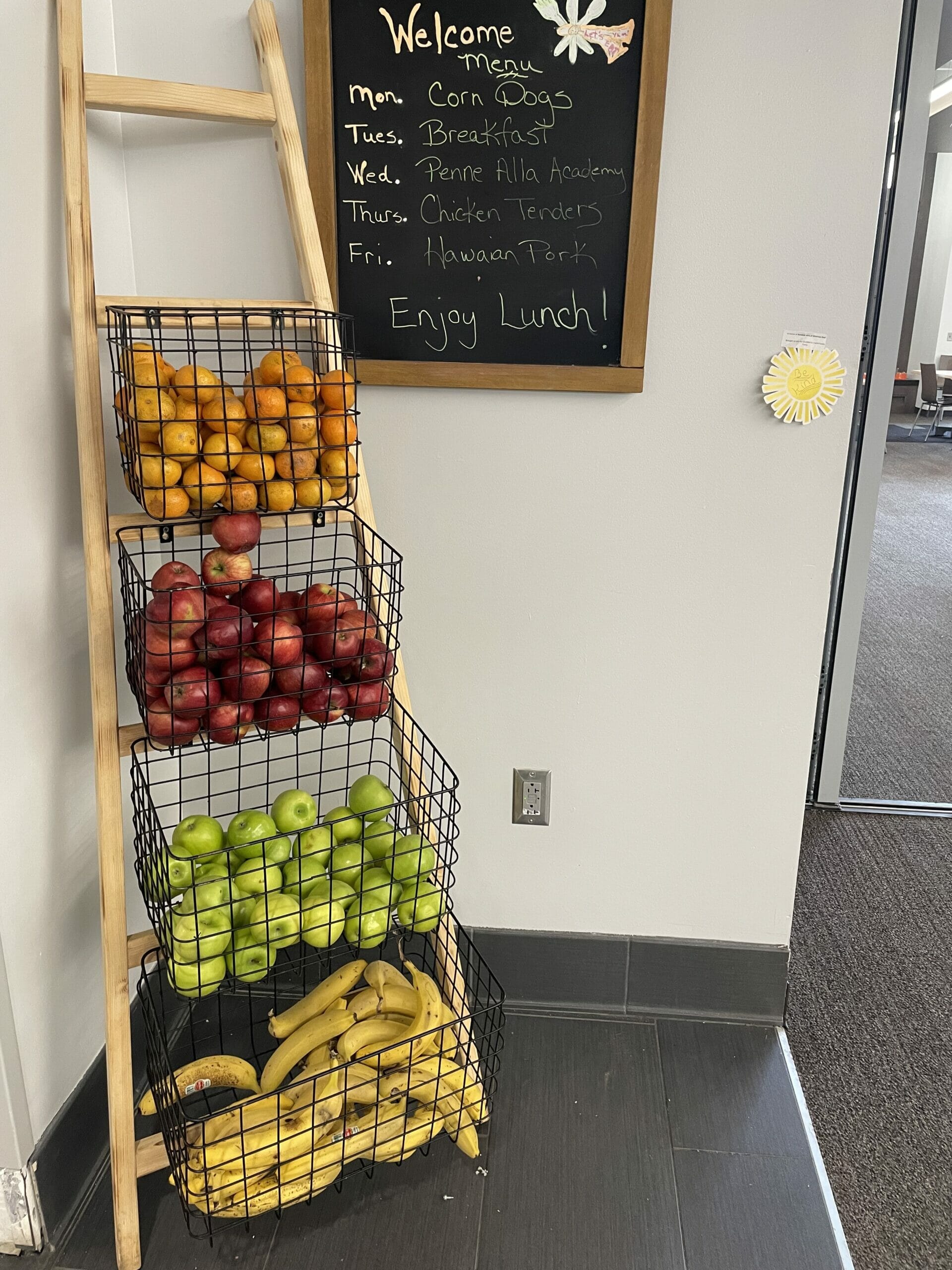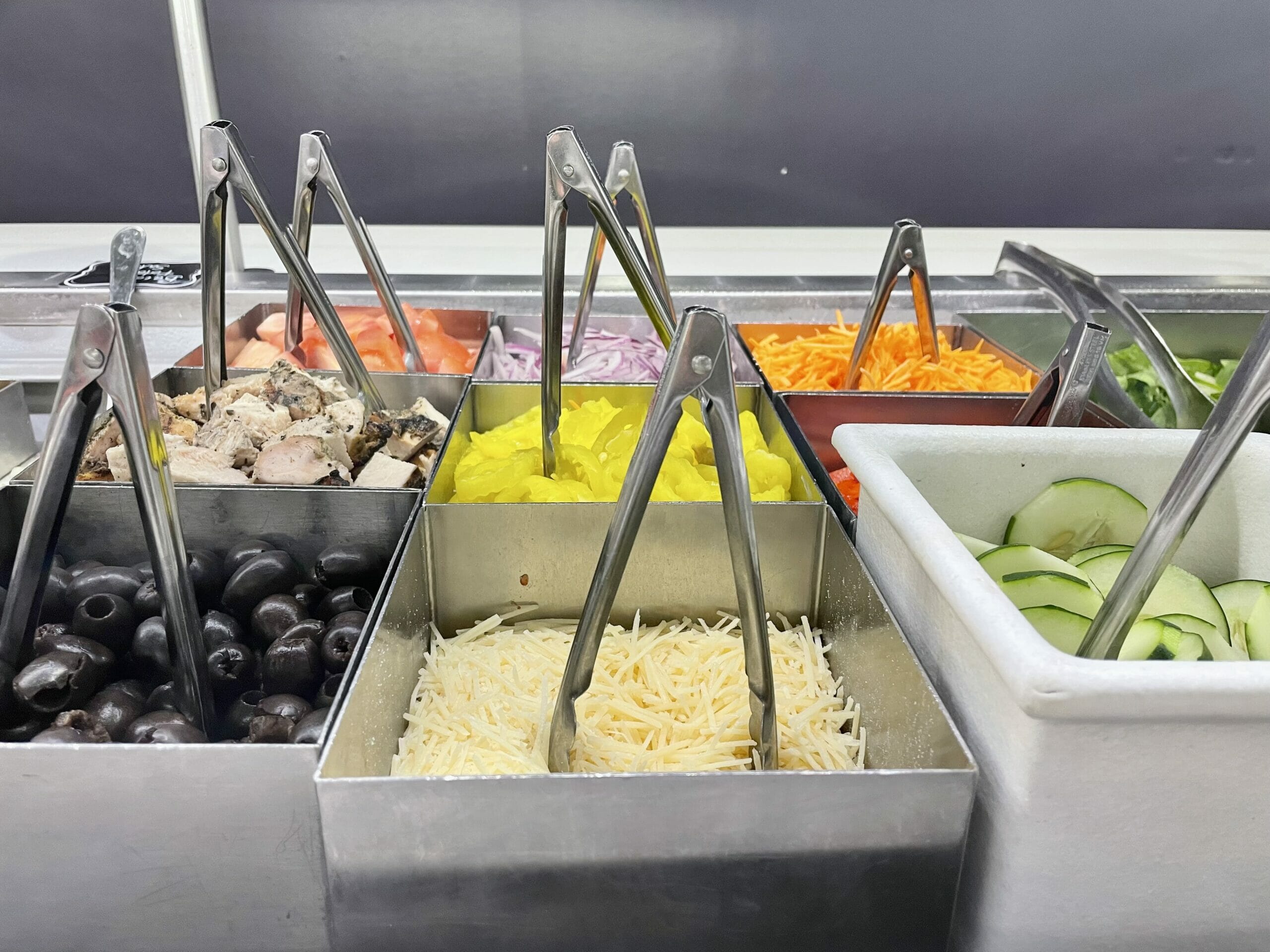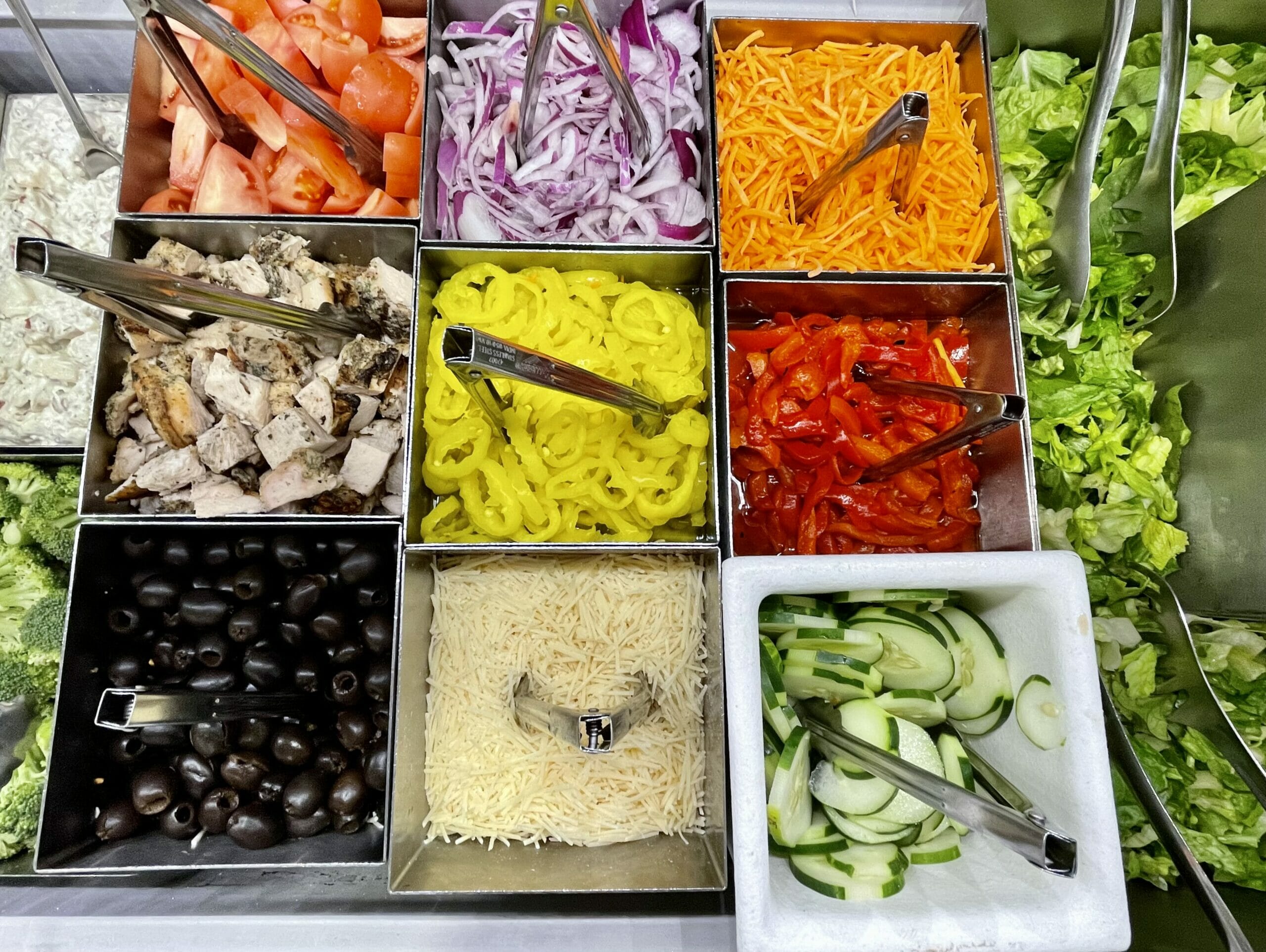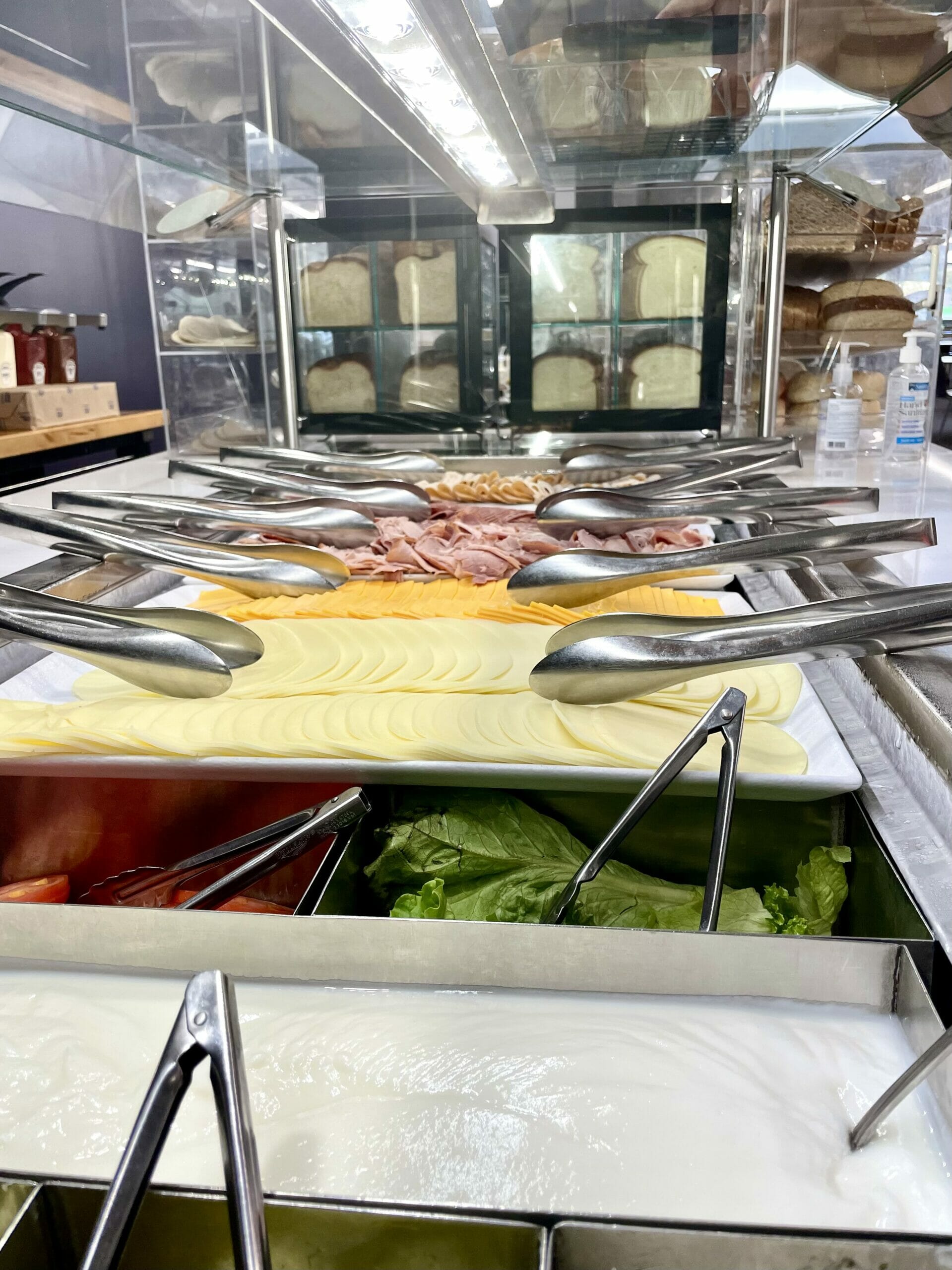(Photos/Andrew Barren)
This month, The Academy Life sat down with Stephanie Campbell, food service director and chef at SAGE, to receive an inside perspective on how the dining hall staff has operated during both a pandemic and a food shortage.
The dining hall’s adjustments re-emphasize how every member of the school staff has stepped up to provide normalcy for students. That said, The Life recognizes that often the work of the dining hall staff can go unnoticed, and we would like to pay homage to their tireless efforts and commitment to the school.
Prior to COVID-19, the work that was required to keep the dining hall operating at full capacity was daunting in and of itself. On a popular day like General Tso’s, the staff processes over 2,300 pounds of food. Every day, with the help of the composting system–around 200 pounds of food gets disposed of. Besides plastics and milk cartons, the bulk of our waste is composted. The staff also tries to cut down on food waste by batch cooking many leftovers. Otherwise, all items left on stations at the end of a lunch period are thrown away to avoid safety or quality issues.
The staff also completes production books to judge supply and demand. Ms. Campbell says, “If we made 15 cases of french fries and ran out, needing two more, we’ll write that in the books so that we know we need more.”
Feeding over 1,400 members of the school community with a 14-body team is a daily challenge, yet that became increasingly more complicated under the restrictions of exposure concerns, quarantine protocols, and supply chain issues. We asked Ms. Campbell to describe how the staff adjusted to such circumstances. First, all meals were individualized and served on a grab-and-go basis. During the pandemic, pre-packaged items such as chips or ketchup packets were hard to find, meaning that the staff had to source out such items from all of their suppliers, gathering what they could. Shortages meant that Ms. Campbell and her assistant, Ms. Amanda Fancelli, had to make frequent grocery trips to find what they needed for future meals. And because of these short excursions, the community never noticed any missing items, as the staff has “luckily been on top of time so that there were no last minute issues with delivery,” Ms. Campbell stated. “That takes a lot of organization,” she added.
Often substitutions included using a different brand of popcorn chicken or a new style of fries.
Last year, all meals had to be delivered personally to lower school classrooms. Campbell says, “It worked well. Mrs. Farrenkopf helped a lot with navigating the halls of the lower school, making sure all classrooms were accounted for and having the correct number of kids per class, how many carts, etc. It was challenging, but once the team got familiar with the routine, it ran pretty smoothly. We had to adjust and learn how to do it that way. It kept us all working and it kept students fed.”
Because of the transition to pre-packaged meals, Campbell and the staff recognized an excessive amount of food waste. Campbell says, “When we didn’t have staff numbers, our dish machine had to be shut down. We went to paper plates, and we had about 30 bags of garbage that would go to the dumpster every day for lunch.”
In addition to these new obstacles, the dining hall staff lost half of its team at one point. Campbell said, “Through Covid, we were managing okay because we had the full team. The menu was limited, so we focused on packaging. But we had the whole team here. Once the school year started, the team then had to transition back to normal service, and we lost half of our team, ending up with six or seven employees . . . We almost weren’t sure what we were going to do. Now we are back to 14.”
While some of us may be snoozing before our alarm clocks ring, the day has already begun for our dining hall team. We want to share a typical potential day-in-the-life for Campbell and her team:
6:00 a.m. Food delivery
7:00 a.m. – 5 p.m. Catering as ordered
7:00-10:30 a.m. Food prep plus cooking to get ready for lunch
10:30 a.m. Food ready for SAGE staff, security, maintenance, faculty, and kindergarten carts for pick up
Serving food by grades:
10:50 a.m. 1st – 2nd
11:20 a.m. 3rd – 5th
11:50 a.m. 6th – 8th
12:35 p.m. 9th – 12th
1:20 p.m. Begin clean up and finish next day’s prep
4:30 pm Finish time on heavier prep and catering. Management complete paperwork
These schedules become more cumbersome on special occasions, like the Thanksgiving meal we enjoyed last month. For that special entreé alone, the staff cooked 50 turkeys, mashed 330 pounds of potatoes, cut and plated 150 pumpkin pies, and prepared dinner rolls, gravy, and corn.
Academy’s SAGE team also works vigorously to ensure our food is ethically and locally produced. A local supplier sources all produce, meat, dairy, and bread. Due to a short staff, some vegetables (corn, peas, and carrots) had to be switched to frozen, along with popcorn chicken and sometimes garlic bread.
Campbell acknowledged that many students do not know how hard this job is and says, “Kindness and patience goes a really long way.”
The dining hall staff’s efforts to ensure the health and well being of Academy’s students and faculty are immeasurable. Thus, our collective kindness and patience can easily “go a long way.”
Thank you, Ms. Campbell and Staff.


